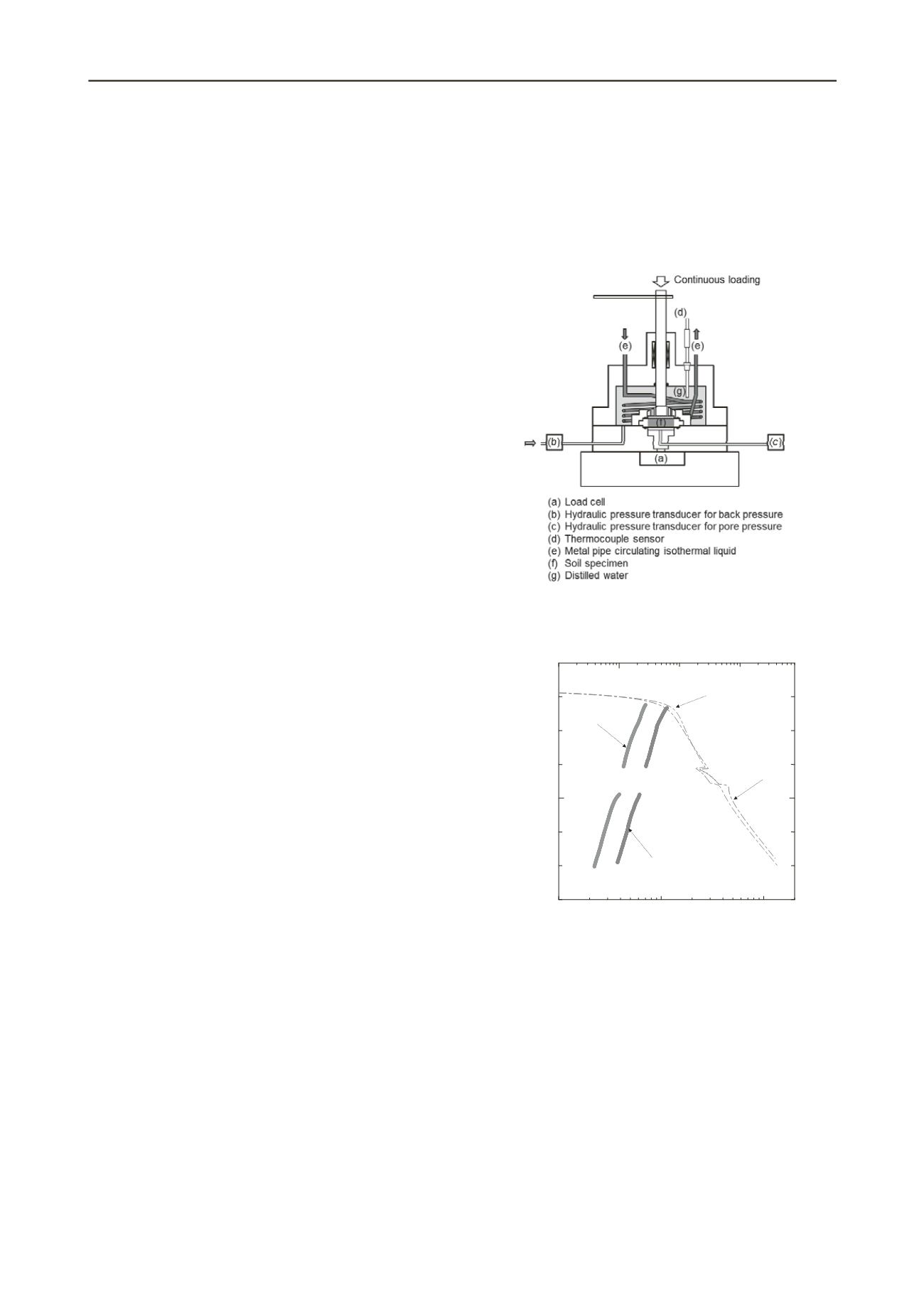
3336
Proceedings of the 18
th
International Conference on Soil Mechanics and Geotechnical Engineering, Paris 2013
thermal and thermodynamics aspects. It is only recently that the
importance of the thermo-mechanical behavior of soil has come
to the fore, particularly in the context of geothermal energy
piles, which are now commonly used in some European
countries to perform the dual role of supporting buildings and
extracting shallow geothermal energy (Brandl 2006, de Moel et
al. 2010). The thermo-mechanical stresses induced in the energy
pile and the surrounding soil affect the pile-soil interaction and
alter the pile capacity. Therefore, several research studies
investigating the thermo-mechanical behavior of energy piles
have been initiated in the recent past. It goes without saying
that the practice of extraction of geothermal energy through heat
pumps, pile foundations and other geo-structures can
significantly reduce the use of fossil fuel and carbon dioxide
emission, and is therefore an important part of sustainable
geotechnical practices.
As mentioned previously, there are several applications of
thermal geomechanics other than geothermal energy extraction,
an important one being deep injection of nuclear wastes. For all
these applications, it is important to understand the relevant
thermo-hydro-chemo-mechanical behavior of soil and rock, and
relate the fundamental behavior to the corresponding
applications. Thus, studies related to thermal geomechanics can
be classified into (i) study of elemental soil and rock behavior
through laboratory tests and constitutive model development,
and (ii) study of the applications using centrifuge and field
experiments, and through theoretical modeling of the
corresponding boundary value problems.
This general report provides a review of 18 papers related to
thermal geomechanics that are accepted for publication in the
proceedings of 18
th
ICSMGE. The topics covered by these
papers can be grouped into the following broad areas: (i)
thermal geomechanics, and (ii) geothermal energy. As the
general theme in all these papers is closely linked with
sustainable development and a few papers deal with geothermal
piles, these papers were assigned to the Sustainability (TC 307)
and Deep Foundations (TC 212) committees of ISSMGE with
the responsibility of organizing a discussion session and
producing a general report based on these papers. In the
following section, a summary of the papers is provided and the
salient information put forward by each paper are outlined.
2 REVIEW OF PAPERS
2.1 Thermal geomechanics
This sub-section includes the papers that describe the
fundamental thermo-hydro-chemo-mechanical behavior of soil
and rock through experimentation and modeling studies. Eight
papers focus on this fundamental aspect of thermal
geomechanics.
Tsutsumi and Tanaka studied the consolidation behavior of
clayey soil under the combined effects of strain rate and
temperature using a constant rate of strain (CRS) loading
apparatus (Figure 1). The CRS apparatus was built based on the
Japanese Industrial Standard (JIS) A 1227 (2009) and holds soil
specimens with a diameter of 60 mm and an initial height of 20
mm. The water pressure was measured by connecting the
bottom of the specimen to a transducer. The soil specimens
were subjected to a back pressure of 100 kPa for ensuring full
saturation. The displacement was obtained by counting the
number of revolutions of the step motor and correcting for the
deformation of the apparatus system. The displacement values
were used to calculate the nominal strain, void ratio and
nominal strain rate. The tests were conducted on reconstituted
Louiseville clay samples (collected from Louiseville, Quebec,
Canada) at temperatures varying between 10°C and 50°C with
strain rates varying over 3×10
-6
s
-1
to 3×10
-8
s
-1
. Tsutsumi and
Tanaka observed that the clay hydraulic conductivity was
strongly dependent on temperature, that the preconsolidation
stress decreased with increase in temperature, and that the
viscous behavior disappeared with decrease in the void ratio
(Figure 2). The authors also examined the ageing effects of the
clay samples and inferred that it was caused by the acceleration
of secondary consolidation wherein the clay particles are
rearranged closely because an increase in temperature reduce
the viscosity of the adsorbed water layer on the surface of the
soil particles. Thus, the specimen developed a new structure
exhibiting higher stiffness against subsequent loading.
Figure 1. A schematic view of CRS testing apparatus for controlling
temperature (Figure 2 of Tsutsumi and Tanaka).
10
1
10
2
10
3
0.8
1
1.2
10
-11
10
-10
10
-9
10
-8
p'
e
log (kPa)
k
log (m/s)
e
-log
p’
(10
℃
)
e
-log
k
(10
℃
)
e
-log
p’
(50
℃
)
e
-log
k
(50
℃
)
k
50
/
k
10
=2.44
Figure 2. Variation of hydraulic conductivity
k
with void ratio
e
and
effective stress
p'
(Figure 4 of Tsutsumi and Tanaka).
Zihms et al. described the effect of high temperature on soil
properties. Soils are subjected to high temperatures due to
several natural and man-made processes including wild fires,
forest fires, and thermal remediation technologies. High
temperature affects the particle size distribution, mass loss,
mineralogy and permeability of soil. In sandy soils, the particle
size decreases with increase in temperature because of
mobilization of fines. In clayey soils, the overall particle size
increases with increasing temperature owing to aggregation and
cementation of the clay fraction. The authors studied the effects
of moderate and high temperatures and of smoldering on soil
properties and used the results to determine the changes in the
soil composition due to temperature change and to predict
possible complications that may arise during or after the
remediation treatments. Both kaolin clay and its mixture with
silica sand were tested, and it was observed that high


